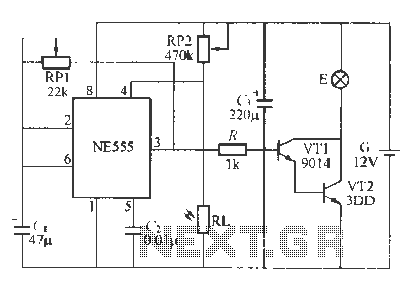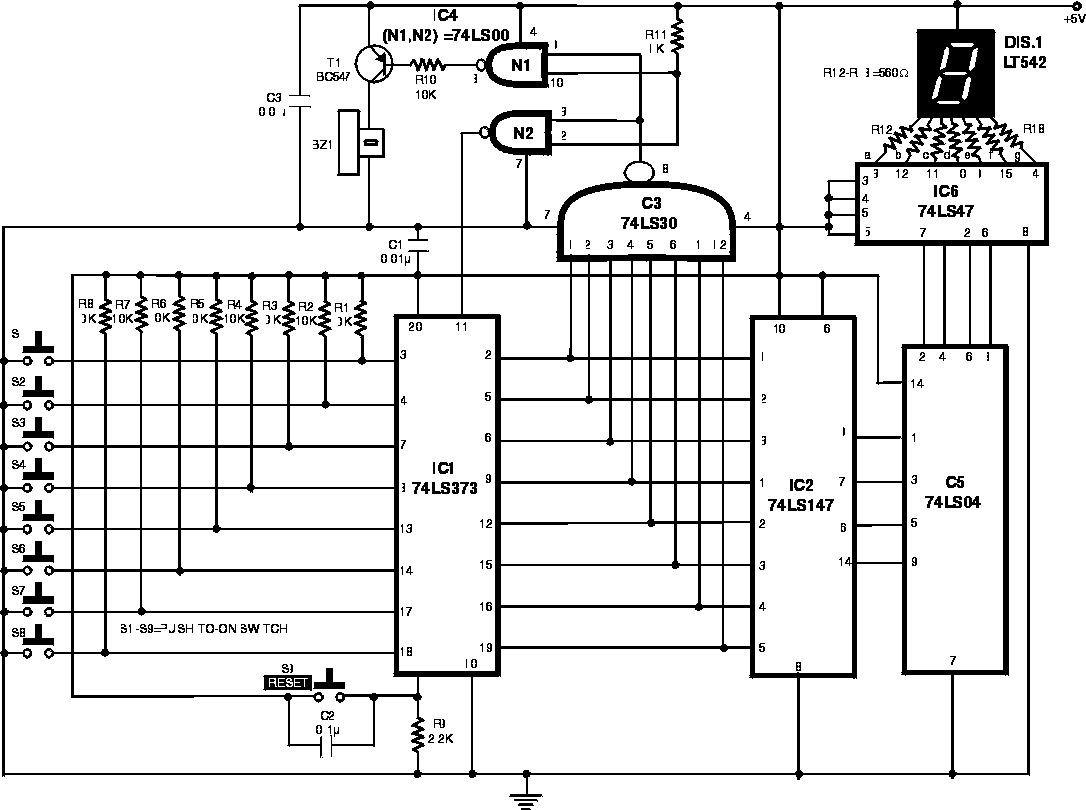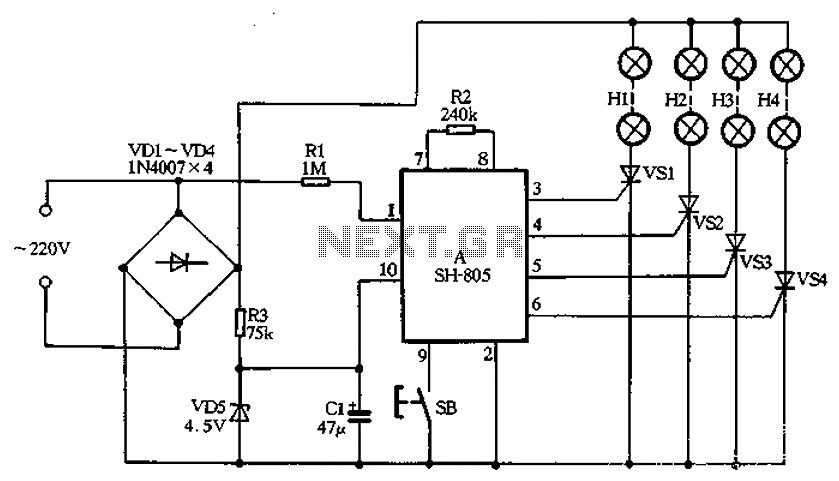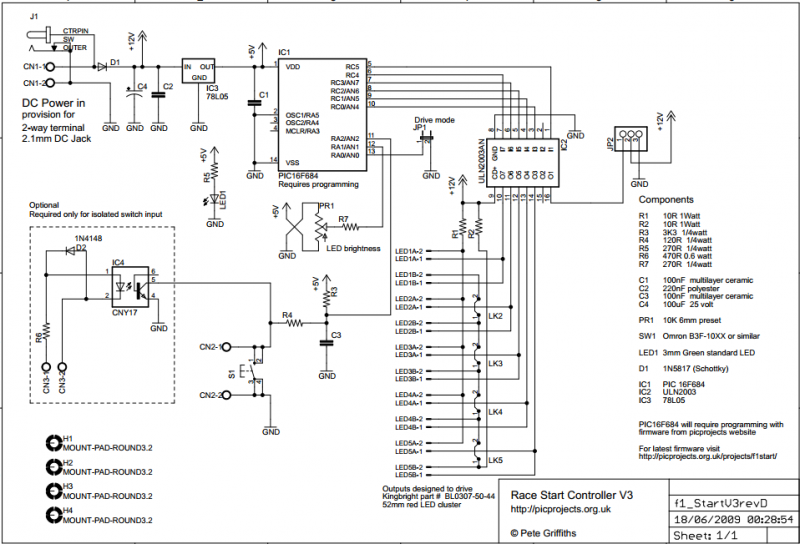
game show indicator lights whos first
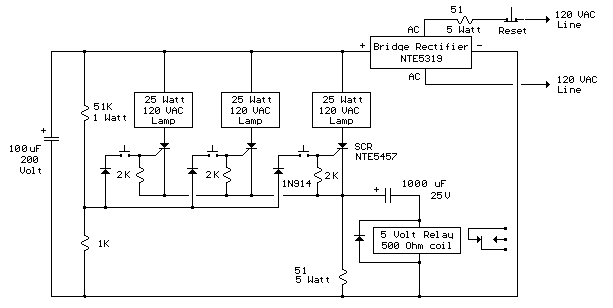
The circuit activates a light corresponding to the first button pressed in a "Who's First" game. While three stages are illustrated, the circuit can be expanded to accommodate any number of buttons and lights.
The circuit design employs a series of push-button switches, each representing a participant in the game. When a button is pressed, it sends a signal to a logic circuit that determines which button was activated first. This logic circuit can be composed of a combination of flip-flops or a priority encoder, which is capable of identifying the first button pressed among multiple inputs.
In the basic configuration, three buttons are connected in parallel to the logic circuit. Each button is connected to a pull-down resistor to ensure that the input remains low when not pressed. When a button is pressed, it pulls the corresponding input high, triggering the logic circuit to output a signal.
The output of the logic circuit is then connected to a light-emitting diode (LED) or a lamp, which illuminates to indicate the first button pressed. The circuit can be designed to include a debounce mechanism to prevent false triggering due to mechanical bounce when the button is pressed.
For scalability, additional buttons and lights can be incorporated by cascading more logic circuits or by utilizing multiplexers. This allows the circuit to handle a larger number of participants without significant redesign. The power supply for the circuit should be appropriately rated to support the total current draw from all connected lights.
In summary, this circuit design offers a flexible and expandable solution for a "Who's First" game, providing a clear visual indication of the first participant to press their button. Proper consideration of debounce and power management will enhance the reliability and performance of the circuit.The circuit turns on a light corresponding to the first of several buttons pressed in a ""Who`s First"" game. Three stages are shown but the circuit can be extended to include any number of buttons and lamps.. 🔗 External reference
The circuit design employs a series of push-button switches, each representing a participant in the game. When a button is pressed, it sends a signal to a logic circuit that determines which button was activated first. This logic circuit can be composed of a combination of flip-flops or a priority encoder, which is capable of identifying the first button pressed among multiple inputs.
In the basic configuration, three buttons are connected in parallel to the logic circuit. Each button is connected to a pull-down resistor to ensure that the input remains low when not pressed. When a button is pressed, it pulls the corresponding input high, triggering the logic circuit to output a signal.
The output of the logic circuit is then connected to a light-emitting diode (LED) or a lamp, which illuminates to indicate the first button pressed. The circuit can be designed to include a debounce mechanism to prevent false triggering due to mechanical bounce when the button is pressed.
For scalability, additional buttons and lights can be incorporated by cascading more logic circuits or by utilizing multiplexers. This allows the circuit to handle a larger number of participants without significant redesign. The power supply for the circuit should be appropriately rated to support the total current draw from all connected lights.
In summary, this circuit design offers a flexible and expandable solution for a "Who's First" game, providing a clear visual indication of the first participant to press their button. Proper consideration of debounce and power management will enhance the reliability and performance of the circuit.The circuit turns on a light corresponding to the first of several buttons pressed in a ""Who`s First"" game. Three stages are shown but the circuit can be extended to include any number of buttons and lamps.. 🔗 External reference
